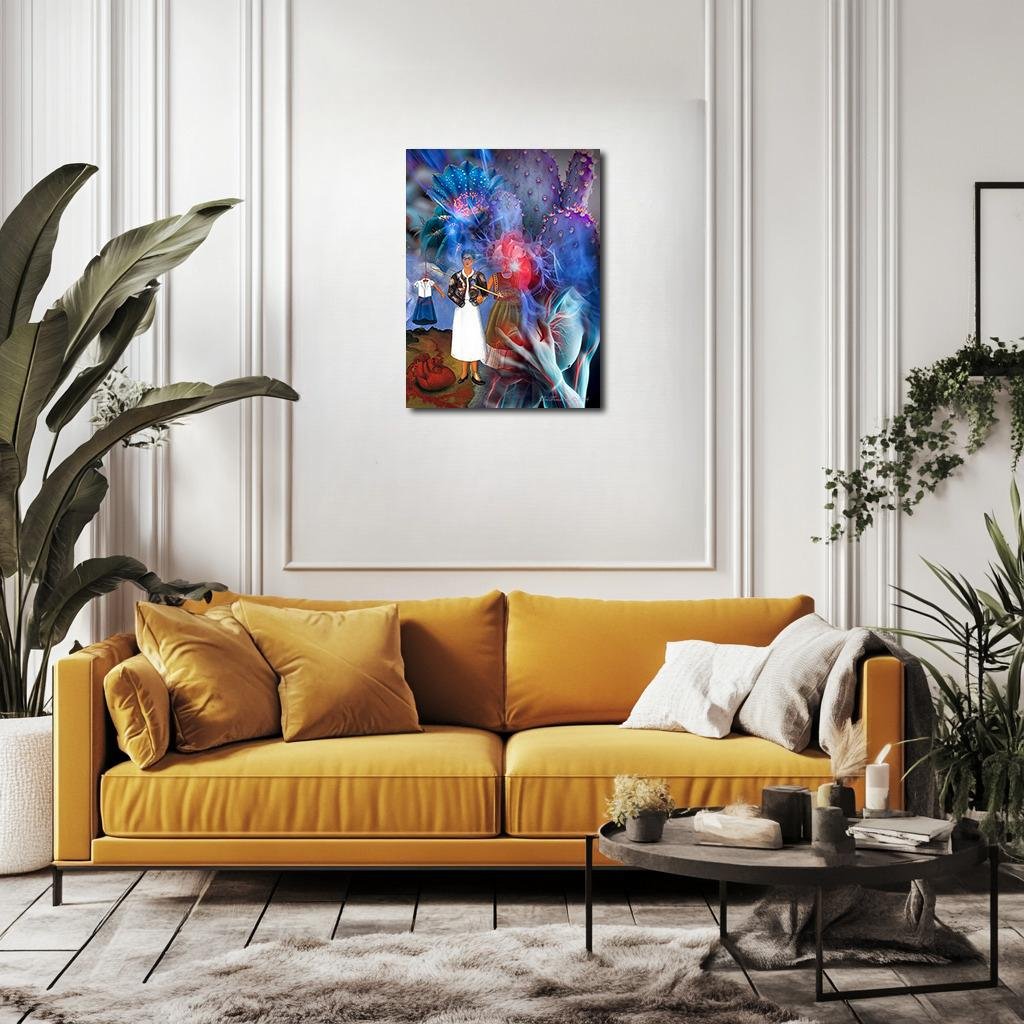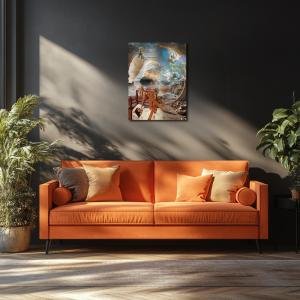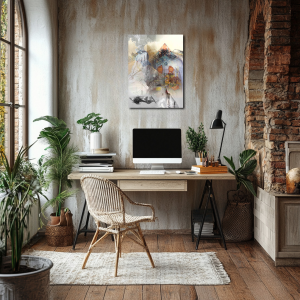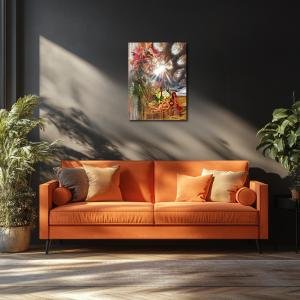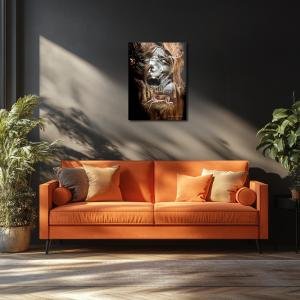Vessels of Absence: Frida’s Living Wound
Vessels of Absence reimagines Frida Kahlo’s Memory, the Heart as a living landscape where grief blooms into electric flowers and thorned cacti. Saturated with arterial reds, electric blues, bruised violets, and spectral silvers, the piece weaves a dreamscape where the heart’s wounds pulse across body and sky. Through vivid fractures and surreal vitality, it honors Kahlo’s fierce endurance—the quiet, unbreakable rhythm of a spirit that turns absence into art.
Please see Below for Details…
Hotline Order:
Mon - Fri: 07AM - 06PM
404-872-4663
This conceptual reimagining of Frida Kahlo’s Memory, the Heart unspools her raw meditation on abandonment into a pulsating world where pain and identity are stitched into the very fabric of life itself. Titled Vessels of Absence , the piece reconstructs Kahlo’s landscape of loss as a living organism—a space where veins, cactus thorns, and electric blooms grow from broken memory, and where the wounded heart beats not only in the body but across the trembling surface of existence.
At the nucleus of the scene stands Frida, portrayed in two fragmented selves. The first figure, dressed in stark white with blood trailing from her heart wound, stands somber and direct, embodying the raw, exposed truth of her suffering. The second figure, headless and clothed in the familiar folds of traditional Tehuana attire, is frozen in mute testimony—a relic of a past self severed by love’s betrayal. Between these halves, suspended by taut threads, hang empty garments like hollowed echoes, hinting at lost childhood and the unattainable wholeness once imagined.
Around these central figures coils a fevered dreamscape: blue cactus blooms erupt into crackling starbursts, their petals edged with tiny veins that pulse and shimmer. These blooms, luscious and deadly, weave a strange dance with barbed prickly pads, suggesting that even beauty grows thorns under the weight of memory. A ghostly hand, luminous and transparent, reaches upward toward a disembodied heart, its veins transforming into blue rivers of grief that dissolve into mist and shadow.
Color flows across Vessels of Absence like arterial blood through the body's deepest tissues. The lower portions of the piece are saturated with deep, bruised reds and rusting earth tones, grounding the scene in the flesh and soil of sorrow. The spilled heart at Frida’s feet blazes in arterial crimson, the thick, weighty color of a wound that refuses to close. Surrounding this broken anchor are thin ribbons of maroon and burnt umber, curling like dried vines—symbols of love’s decay as it stretches into the void.
Above, the palette shifts into more surreal territories: vibrant electric blues and ultraviolet violets surge around the blooms and cactus fields. These cooler hues create a haunting, bioluminescent glow that suggests the strange, alien vitality that suffering can nurture—the twisted beauty that emerges when a heart breaks but refuses to die. The prickly purples and bruised lavenders of the cactus arms whisper of the body’s resilience even as it scars, a testament to how nature mirrors human endurance and pain.
The background atmosphere fades into soft misty grays and spectral silvers, blending the boundary between earth and air, memory and oblivion. This ethereal environment casts a ghostly hush over the scene, as if the world itself holds its breath in grief, waiting to see if the heart can beat again.
When I created Vessels of Absence , I sought not merely to retell Frida Kahlo’s narrative of betrayal but to embody the living, evolving nature of heartbreak itself. Kahlo’s Memory, the Heart was never a frozen confession; it was a living organism of grief, endlessly weeping, growing, transforming. In this reimagining, I wanted the landscape to breathe with her—each cactus thorn, each bloom, each pulse of color an echo of the heart that refused to go silent even when it shattered.
The compositional rhythm pulls the viewer through layers of density and lightness: from the heavy blood-soaked earth where the heart lies torn open, to the ghostly garments fluttering in absence, to the electric storm of flowers and veins crackling through the unseen heavens. This vertical movement suggests that memory, like blood, rises unbidden, propelled by the silent will of survival. It is not the mind that carries the past, but the body—the heart and veins that still hum with what has been lost.
In this vision, Kahlo is both the wounded and the witness—the source of pain and its tireless chronicler. Her gaze is neither passive nor broken; it is the gaze of someone who has accepted suffering as an inseparable companion to existence, someone who will not be defined by loss but will sculpt it into the very architecture of their soul.
Add your review
Your email address will not be published. Required fields are marked *
Please login to write review!
Looks like there are no reviews yet.

